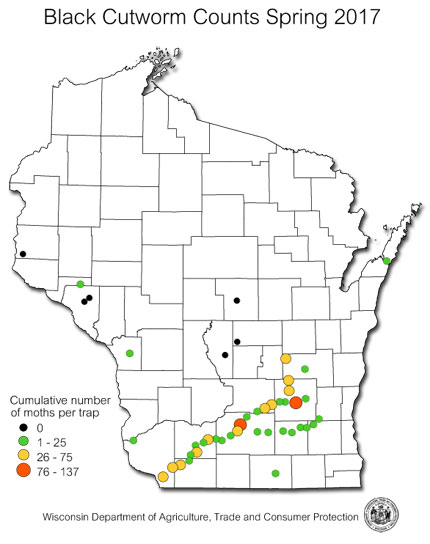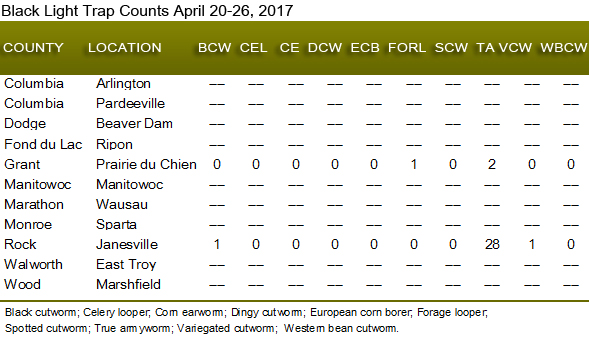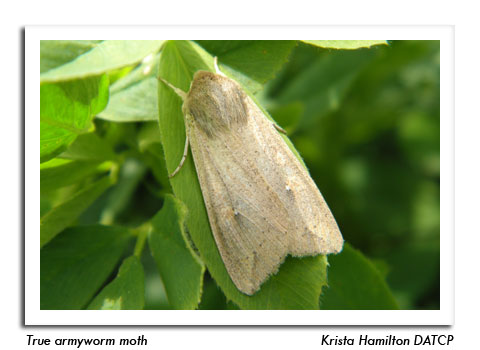
 |
|
|
Corn
Volume 62 Number 1 Date 04/27/2017 BLACK CUTWORM - Strong southerly winds from April 8-12 brought the season's first major migration of black cutworms northward into the state. DATCP monitoring locations collected 201 moths during that period, with seven sites registering "significant" counts of nine or more moths in two nights. Another 835 moths were captured during the two weeks from April 13-26, while 17 more traps recorded significant numbers. Thirty-nine of 45 pheromone traps from Prairie du Chien in Grant County to Sturgeon Bay in Door County have to date captured 1,036 specimens. As of April 26, the highest individual cumulative trap count is 137 moths in Dodge County. The relatively high moth numbers recorded in April suggest a heightened risk for black cutworm problems when corn emerges next month. Conditions were also very conducive for outbreaks last spring, though significant infestations did not develop. The map below summarizes this month's trap counts. TRUE ARMYWORM - The black light trap at Janesville in Rock County collected 29 moths on the nights of April 13-19. Although these counts are very low in comparison to the large number of black cutworm moths captured during the same period, they signal that a migration has occurred. Black light trap network participants should install traps by May 4 to monitor the armyworm flight this spring. EUROPEAN CORN BORER - Pupation of overwintered larvae is underway in southwest Wisconsin. Last fall's slightly higher larval population (11 borers per 100 plants) may produce a larger spring moth flight than in recent years. Considering the potential for a rise in ECB levels and the expected increase in conventional corn acreage, 2017 will be an important year to closely follow ECB flight data and whorl-stage corn survey results in June. -- Krista Hamilton, DATCP Entomologist 



|
|
|